Physical Address
304 North Cardinal St.
Dorchester Center, MA 02124
Physical Address
304 North Cardinal St.
Dorchester Center, MA 02124
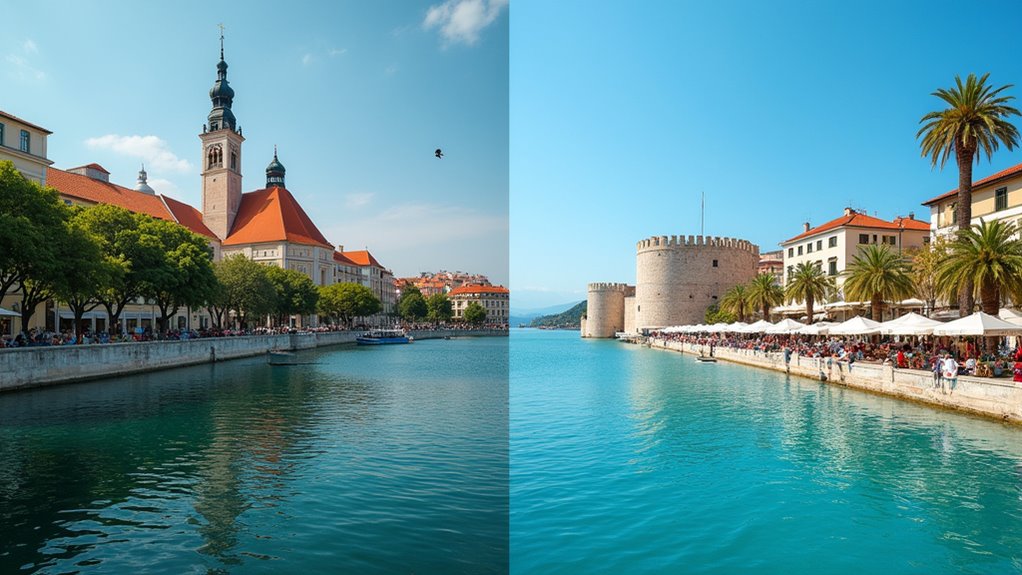
Neither Zagreb's urban charm nor Split's coastal allure makes for an easy choice—discover which Croatian gem suits your lifestyle.
Zagreb versus Split comes down to lifestyle preferences. You’ll find Zagreb offers year-round urban living with Austro-Hungarian charm, diverse job opportunities, and 9% lower living costs. Split delivers Mediterranean coastal living with Roman heritage, beach access, and tourism-driven seasonality. Zagreb excels with stable employment and cultural consistency, while Split counters with seafood cuisine and spectacular Adriatic views. Your choice depends on whether you value urban amenities and career stability or coastal beauty and seasonal energy. The differences extend far beyond just location.
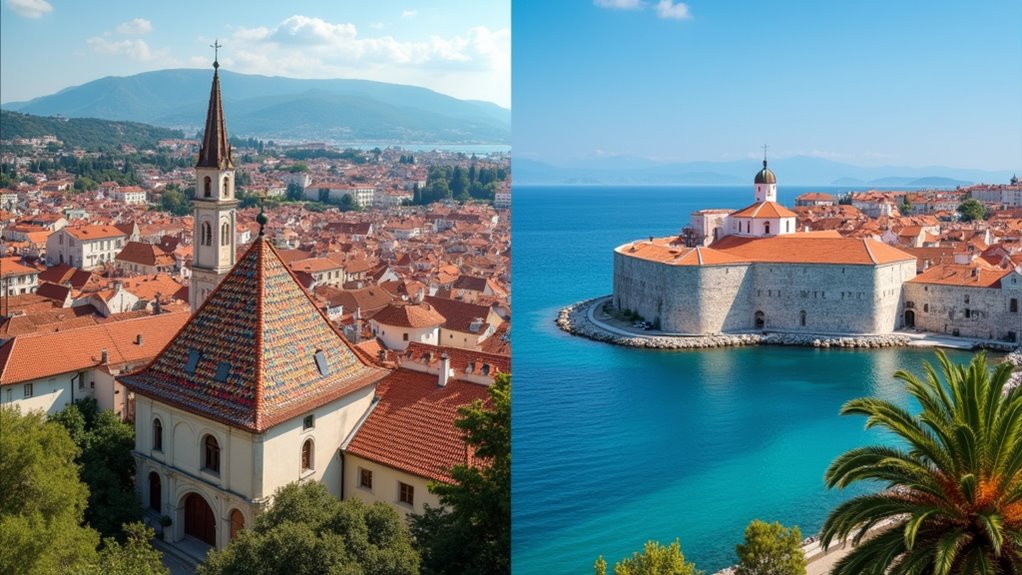
While both cities showcase Croatia’s diverse character, Zagreb and Split differ dramatically in their geographic settings. You’ll find Zagreb nestled in the northwest, surrounded by the Medvednica mountains with the Sava River flowing nearby.
Split, meanwhile, sits along the Adriatic coastline in the Dalmatia region, offering Mediterranean vibes and island access. Unlike other Mediterranean destinations such as Greece, Split provides a unique blend of historical charm and coastal beauty.
The distance between these contrasting cities spans about 409 kilometers by road, typically requiring a 4-hour drive via the E71 highway. For travelers comparing options, this driving distance is calculated using turn-by-turn directions that follow actual road routes.
If you’re short on time, flights cover the 259-kilometer straight-line distance much faster.
Zagreb’s continental climate delivers four distinct seasons, while Split enjoys milder Mediterranean weather influenced by the sea.
This fundamental geographic contrast shapes everything from architecture to lifestyle in these two Croatian highlights.
Geographic differences between Zagreb and Split influence more than just landscapes and weather patterns—they directly impact your wallet too. Overall, you’ll spend about 9% more in Split, needing roughly €3,979 monthly compared to Zagreb’s €3,600 for a similar lifestyle.
While grocery prices are slightly higher in Zagreb (0.9%), you’ll save about 10.4% when dining out there.
Housing costs vary, with Split generally 1.7% pricier, though estimates fluctuate.
You’ll find transportation costs about 5% lower in Split.
Getting around Split won’t drain your wallet as much, with transportation expenses roughly 5% cheaper than Zagreb.
The most dramatic differences appear in clothing (up to 77% more expensive in Split) and entertainment (33% higher in Split). Despite the higher costs, many find the extra expense worthwhile since your income will likely decrease when moving to Split as the average net salary is 23.6% lower than in Zagreb.
Personal care products cost about 12% more in Split, while Zagreb has markedly higher childcare expenses.
Split’s higher entertainment costs are partially due to its reputation as one of Croatia’s hedonistic destinations for vibrant nightlife scenes.
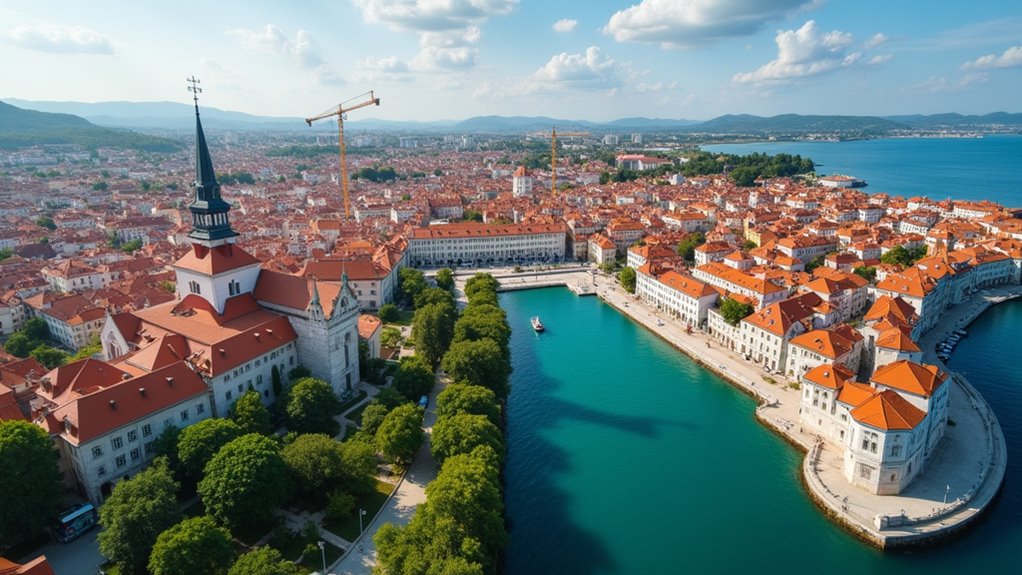
Despite Croatia’s overall real estate growth, you’ll encounter particularly different markets in Zagreb and Split. The capital has seen property prices reach €2,830 per square meter, with increases of 11.9% in 2024 slowing to 7.9% in 2024.
Split offers a distinct real estate landscape driven by tourism, with luxury apartment demand jumping 20% over two years. This coastal gem attracts significant foreign investment, particularly for high-end properties. The city’s new developments are trending toward larger living spaces, with apartments now averaging 85 m². Split’s proximity to luxury destinations throughout Europe has further enhanced its appeal among wealthy international buyers.
Your investment options vary by city: Zagreb provides urban housing opportunities fueled by employment-driven migration, while Split capitalizes on its seaside appeal and vacation rental potential.
Both cities face affordability challenges, but ongoing economic growth and infrastructure development continue to strengthen their investment appeal despite regulatory hurdles for foreign buyers.
When traveling between Croatia’s two major cities, you’ll find several transportation options to suit different preferences and budgets.
Buses offer a good balance, taking about 5 hours with scenic views and competitive pricing. The journey includes interesting views as buses pass through long mountain tunnels that can exceed 5 km in length.
Trains are slower at 6+ hours but provide a different landscape perspective for around €28 one-way.
Flying is your fastest option at just 40 minutes in the air, though you’ll need to factor in airport travel time.
Frequent flights operate year-round, with more during summer.
If you prefer flexibility, driving takes 4-5 hours via the A1 highway (€25 toll) and allows stops at scenic spots.
For maximum convenience, private transfers provide door-to-door service but cost markedly more at about €650 for three people.
When planning your transportation budget, keep in mind that Split generally offers good value compared to many European destinations, especially outside peak tourist season.
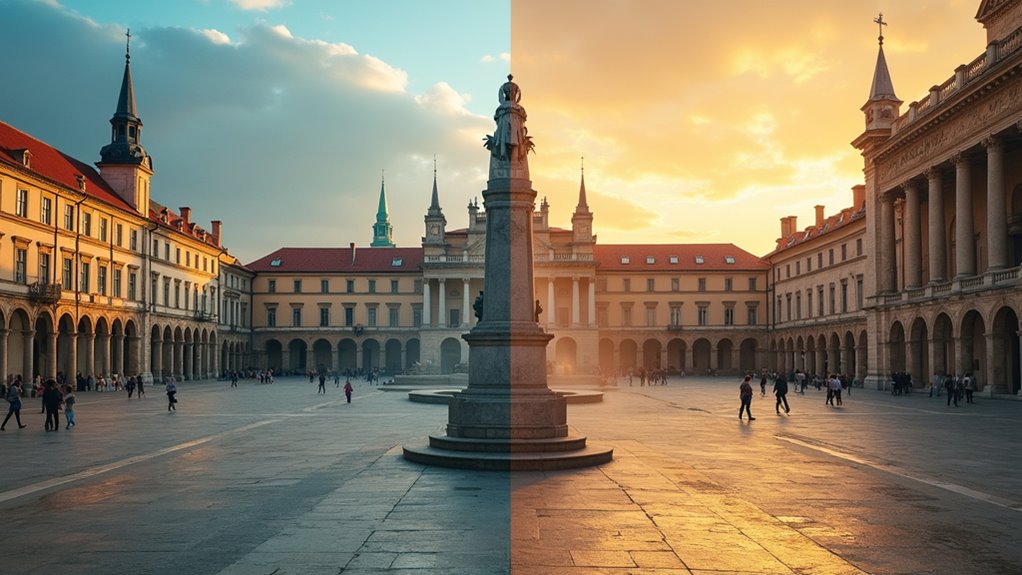
Once you arrive in either city, you’ll discover that Zagreb and Split offer distinctly different cultural experiences despite both being affluent in attractions. Zagreb showcases its Austro-Hungarian heritage through neo-Gothic architecture and elegant museums, while Split immerses you in ancient Roman splendor centered around Diocletian’s UNESCO-listed palace. Similar to the Scandinavian rivals Denmark and Sweden, these Croatian destinations each present unique historical identities worth exploring.
Choosing between Zagreb and Split ultimately means deciding between two distinct lifestyle experiences that shape your daily routines and quality of life.
In Zagreb, you’ll embrace a cosmopolitan urban lifestyle with year-round cultural events and a well-developed public transportation system. The continental climate supports diverse seasonal activities, from cozy winter cafés to summer festivals in urban parks.
Split offers a Mediterranean coastal existence tied closely to the Adriatic Sea. Your lifestyle will revolve around beaches, seaside dining, and water sports during vibrant summers, with particularly quieter winters when tourism slows. The city serves as an excellent base for exploring other must-visit destinations along Croatia’s stunning coastline.
While Zagreb provides consistent urban amenities at lower prices throughout the year, Split delivers that coveted seaside atmosphere with seasonal rhythms. Despite overall higher living costs in Zagreb, dining out tends to be 10.4% cheaper in the capital city compared to Split. Your choice ultimately depends on whether you prefer steady urban energy or coastal living with its seasonal ebbs and flows.
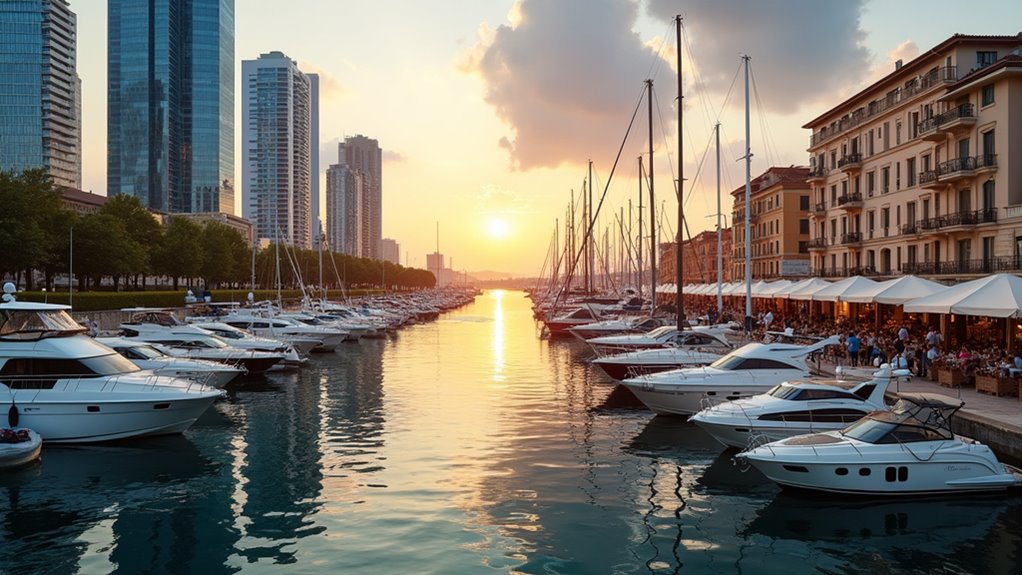
While both cities offer diverse career paths, Zagreb and Split present particularly different economic landscapes for job seekers and entrepreneurs. Zagreb’s economy revolves around services, IT, and finance with higher wages and year-round stability, while Split’s job market fluctuates with tourism seasons. If you’re planning an Austrian travel alternative, Croatia offers compelling economic opportunities while delivering similar cultural experiences.
The economic differences between Zagreb and Split naturally extend to their tourism landscapes, creating distinct experiences depending on when you visit.
Split peaks in summer with beaches attracting young travelers and families. Meanwhile, Zagreb distributes visitors more evenly year-round. You’ll find Zagreb especially lively during spring and autumn cultural events, plus its Christmas markets create a winter tourism spike when Split quiets down.
Americans and Brits flock to Split’s ancient ruins and beaches, while Zagreb appeals to cultural enthusiasts seeking history and art. Search data reveals Dubrovnik and Split rank first and second among UK travelers, with 22,971 monthly searches for Dubrovnik alone in 2022. Much like those choosing between Mediterranean destinations like Malta and Greece, visitors to Croatia often debate coastal charm versus culture. Accommodation-wise, Split offers both luxury and budget options; Zagreb leans toward mid-range and upscale choices.
Both cities contribute profoundly to Croatia’s impressive 21.3 million visitors in 2024—a 4% annual increase—though they’re working to extend tourism beyond peak months with year-round attractions.
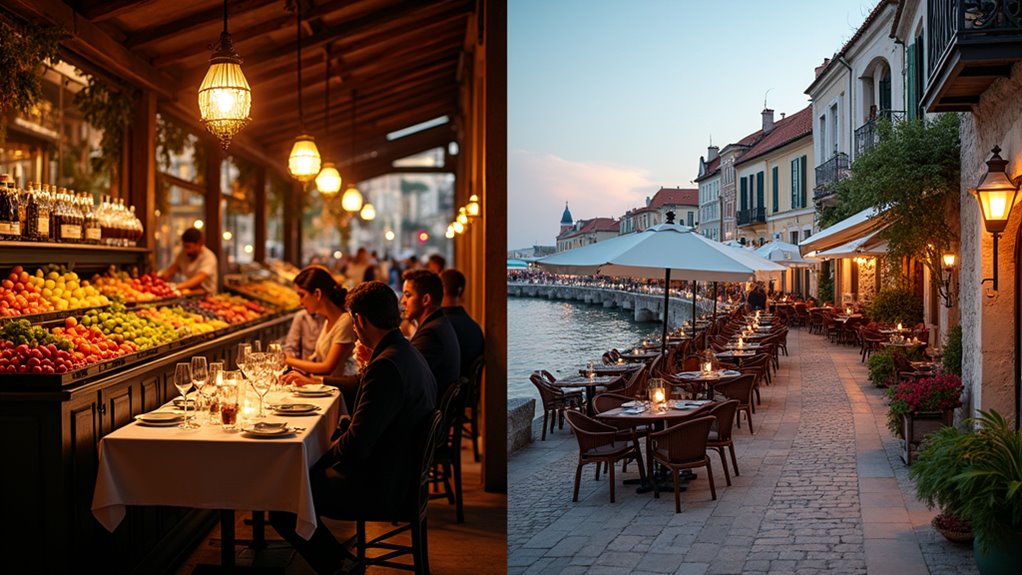
When hunger strikes or night falls, Zagreb and Split reveal their most distinct cultural differences through food and entertainment. Zagreb offers hearty Central European flavors like štrukli and sarma, while Split tempts you with Mediterranean seafood dishes such as crni rižot and fresh catch prepared with olive oil and local herbs. Visitors to Split can experience exceptional lobster and fish from the pristine waters around Vis and nearby islands. After a filling meal, you might consider joining one of Split’s snorkeling tours that showcase the crystal-clear Adriatic coastline.
For nightlife enthusiasts:
Whether you’re drawn to Zagreb’s lively avenues or Split’s sparkling shores, you’ll find your perfect Croatian match. Your budget stretches further in Zagreb, but Split’s seaside charm might be worth the premium. Like choosing between a vintage wine and a coastal cocktail, each city offers distinctive flavors of Croatian life. Make your decision based on job prospects, lifestyle preferences, and whether you crave city rhythm or Mediterranean magic.